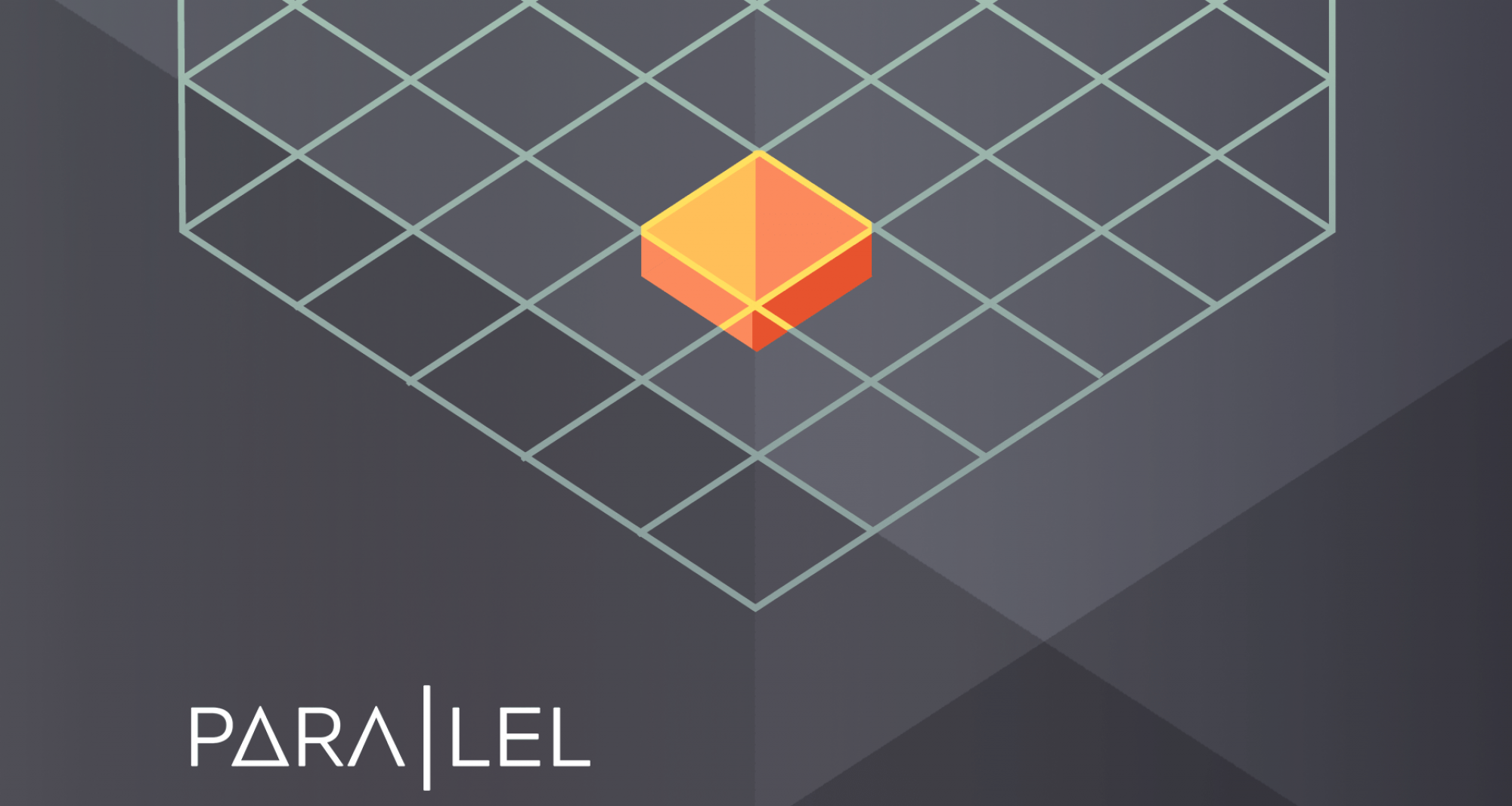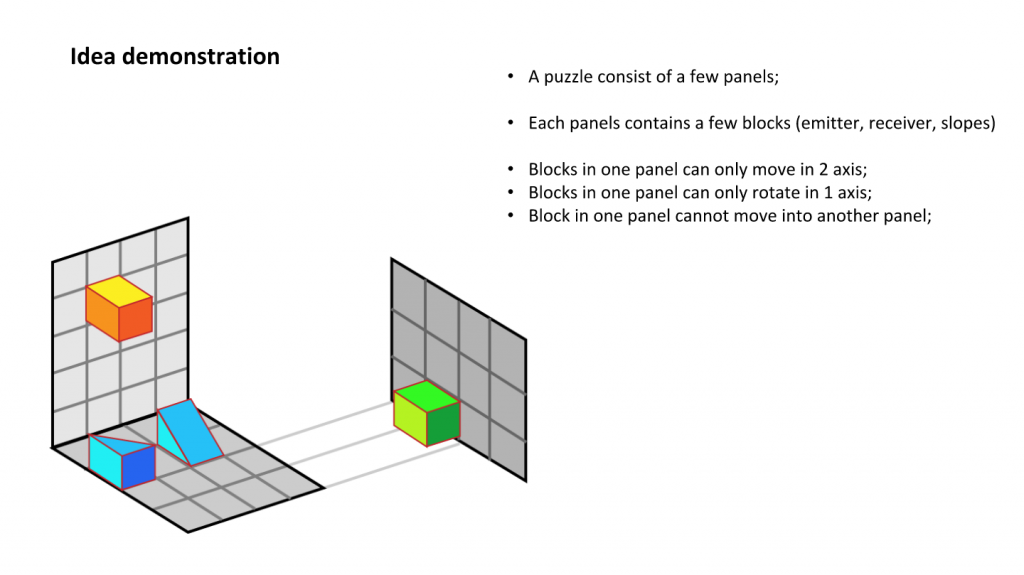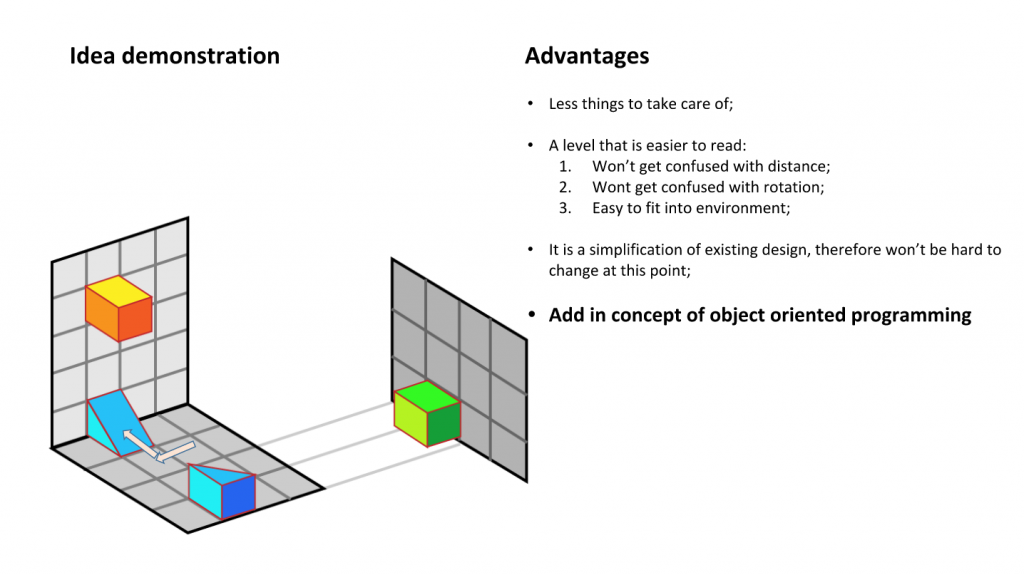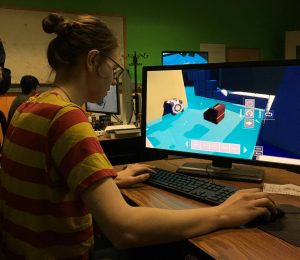Week ten update:
The past few weeks, the team has been traveling, both for spring break and to San Francisco to attend GDC – thus, work has been inconsistent up till week 10.
Across weeks 8 and 9, we spent time preparing for the ETC halves presentations (internal mid semester presentations). If interested, our halves slides can be found here.
Moving on from halves, and our feedback from fellow students and ETC faculty, we’ve planned a road map for the second half of the semester – mainly what our final deliverable should look like, and what sorts of testing goals we should strive to meet. This week, we have begun designing the larger world for the game, and drafting how we would arrange the puzzles in that world. The filled in dots represent hard gates where the player is expected to learn how to use a new module in order to progress. In addition to this, the solid lines represent paths that the player can take – dotted lines represent one-way paths for the player. We believe this format will allow for more of a feeling of exploration for the players.
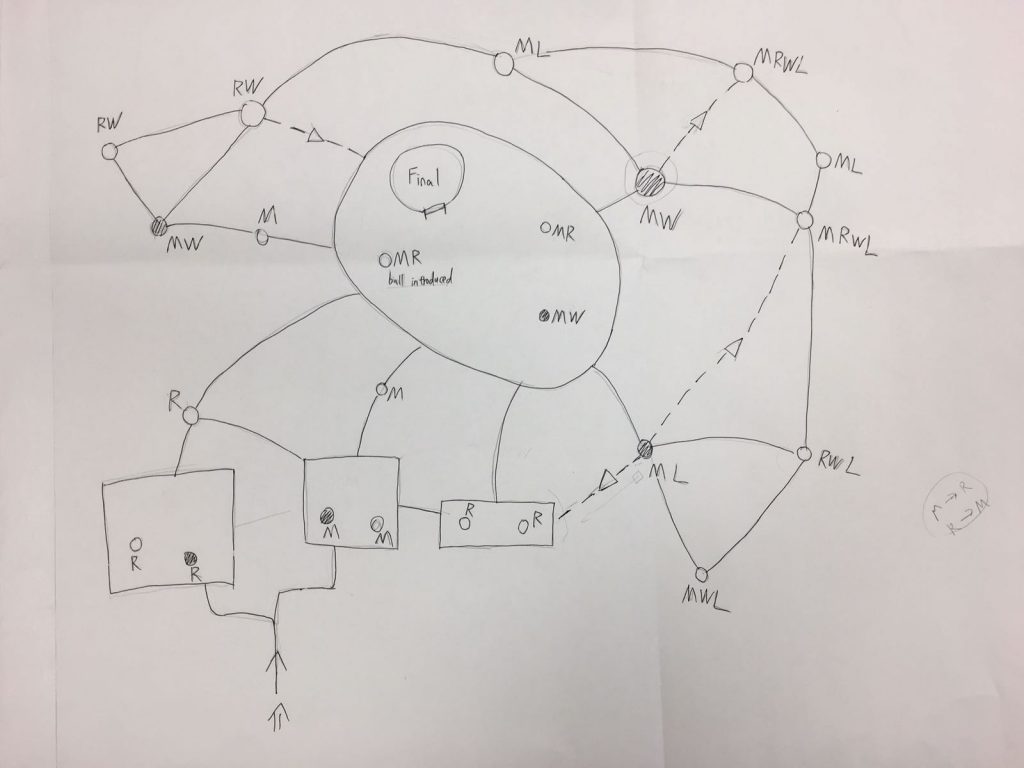
A more detailed spreadsheet of how we imagine the levels to progress can be found here.
From there, we’ve made decisions to improve our UI – both making it more readable for naive users, and more intuitive to use. In addition to this, we have decided to edit the visual representation of buttons in order to make them feel more clickable, and display more clear information about what modules do, editing those parameters.
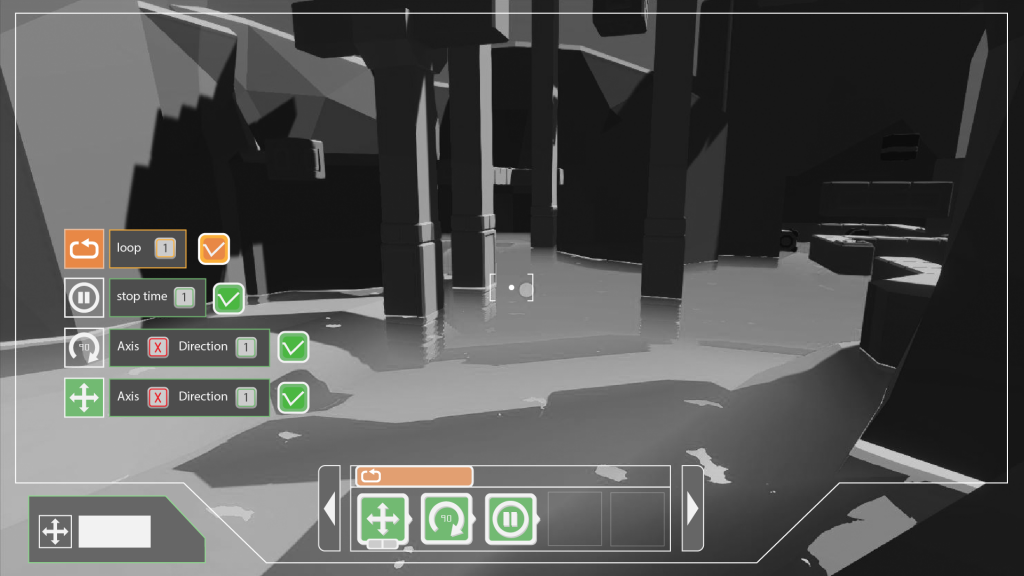
Our next testing goal to hit is on April 7th, in which we will be playtesting the game with students from local middle and high schools. It’s likely that we might not be able to get the UI refined to the point where we would like it for that session, but we will be aiming to get the new puzzle arrangement and world implemented for it.
